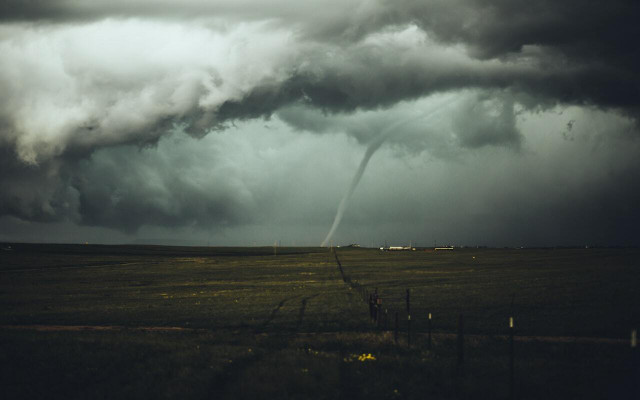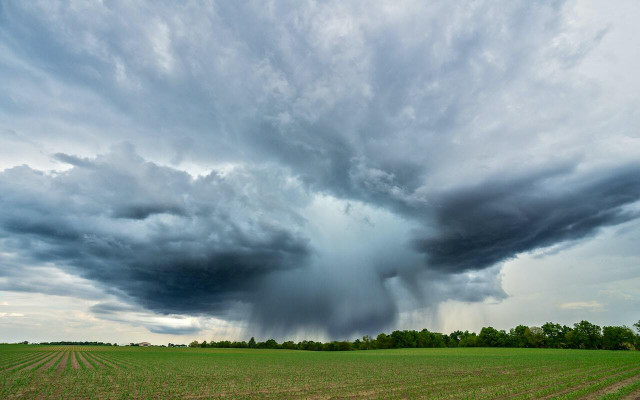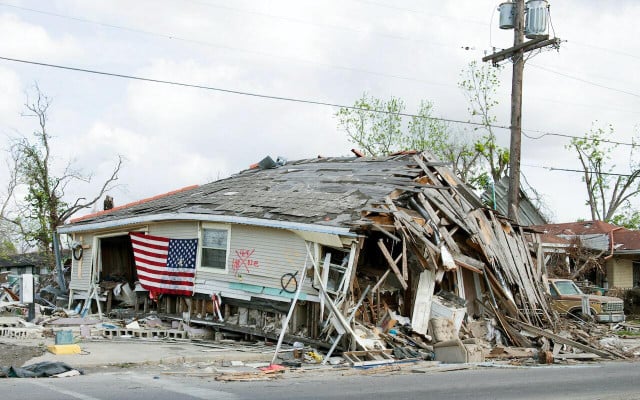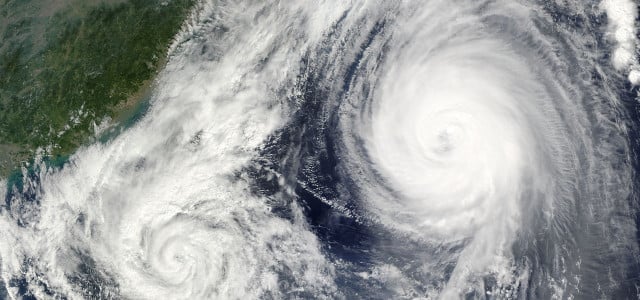Wondering about the difference between a tornado and a hurricane? Both are devastating weather events that leave destruction in their wake. Learn more here.
Natural disasters are becoming more common, which is especially problematic when you consider how much destruction they cause. There are many types of storms, so it can be easy to confuse one for the other. Let’s take a look at the difference between a tornado and a hurricane to help bring some clarity.
What Is a Hurricane?



The definition of a hurricane is a type of tropical cyclone, which is a storm system rotating around an area of low pressure, producing strong winds and heavy rain. It generally starts off as a tropical depression that has sustained winds of 38mph, transitions to a tropical storm with sustained winds of 39-74mph, and can be classified as a hurricane once winds reach more than 74mph.
They are caused when warm moist air over water begins to rise and is replaced by cooler air. As this process continues, large clouds and thunderstorms are created and begin to rotate due to the Coriolis effect. The thunderstorms will rotate counterclockwise around the center, which is called the eye.
Hurricanes are very large storms, with an average size of 500 miles wide and 10 miles high. They are categorized by their wind speeds into the following levels:
- Category 1: Wind speeds of 74-95 mph, expect some damage
- Category 2: Wind speeds of 96-110 mph, expect extensive damage
- Category 3 (major): Wind speeds of 111-129 mph, expect devastating damage
- Category 4 (major): Wind speeds of 130-156 mph, expect catastrophic damage
- Category 5 (major): Wind speeds 157 mph or higher, expect catastrophic damage
Hurricane season is from June through November in the Atlantic, with the peak occurring in mid-September. This is due to the warmer sea surface temperatures. According to the NOAA, an average of 7 hurricanes and 3 major hurricanes occur on a yearly basis in the Atlantic region. The states most likely to experience hurricanes in this region include Florida, Texas, North Carolina, Louisiana, and South Carolina.
What is a Tornado?



A tornado, on the other hand, is a narrow and violently rotating air column that extends from a thunderstorm cloud to the ground. What makes them extremely dangerous, aside from strong winds, is that they aren’t always visible — rain or low-hanging clouds can sometimes obscure them.
This extreme weather event is created when a thunderstorm forms in a cumulonimbus cloud, and the wind speed and direction change at high altitudes, causing the air to swirl horizontally. Rising air from the ground pushes up and causes the swirling to tip over and starts to suck up more warm air from the ground. The funnel becomes longer and stretches towards the ground — upon touchdown it becomes classified as a tornado.
The Enhanced Fujita (EF) Scale is used to categorize tornadoes based on their wind speed, area, and intensity.
- F0 (weak): Winds of 40-72 mph, light damage
- F1 (weak): Winds of 73-112 mph, moderate damage
- F2 (strong): Winds of 113-157 mph, considerable damage
- F3 (strong): Winds of 158-206 mph, severe damage
- F4 (violent): Winds of 207-260 mph, devastating damage
- F5 (violent): Winds of 260-318 mph, incredible damage
Tornadoes can and have occurred in all 50 states, so no one is safe from these harmful weather events. They are very common, with an estimated 1200 occurring in the United States each year. Unlike hurricanes, which have a defined season, the likelihood of tornadoes during a specific time of year ranges depending on which part of the country you live in. However, tornadoes can occur at any time. Although there is no truly defined season, the risk of a tornado is highest in the Southern Plains from May to early June, in the Gulf Coast during early spring, and in the Northern Plains/Upper Midwest from June to July.
What’s the Difference Between a Tornado and a Hurricane?



In order to fully understand and visualize the differences between the two types of storms, it’s easiest to compare them side by side.
Characteristics of hurricanes:
- Width: Several hundred miles wide
- Duration: Can last for up to three weeks
- Wind strength: Winds are usually less than 180 mph
- Predictability: Can be predicted and you usually have several days of advanced warning
- Frequency: Less common but cause more damage
- Location: Formed over warm water in tropical oceans
- Development: Develop when they are far away from a jet stream
Characteristics of tornadoes:
- Width: Typically no more than ¼ mile wide
- Duration: Last about an hour at the most
- Wind strength: Severe tornadoes can have winds as strong as 300 mph
- Predictability: Come on quickly with often no more than about 30 minutes’ notice
- Frequency: Commonplace and come and go quite quickly
- Location: Formed over land
- Development: Develope within storms very close to jet streams
Notable Hurricanes & Tornadoes



Hurricane Katrina is one of the most well-known hurricanes of the last century, as it was one of the most costly both in terms of lives lost and damages. The 2005 hurricane resulted in over 1,800 fatalities and $186.3 billion worth of damage. It is known as the costliest hurricane in U.S. history. This is followed by:
- Hurricane Harvey (2017): $148.8 billion in damage and 70 fatalities
- Hurricane Maria (2017): $107.1 billion worth of damage and 2,975 fatalities
- Hurricane Sandy (2012): $81.9 billion in damage and 117 fatalities
- Hurricane Ida (2021): $78.7 billion in damage and 91 fatalities
The costliest tornado in U.S. history occurred in Joplin, Missouri in 2011, resulting in $2.8 billion in damage and 158 fatalities. Other destructive tornadoes in recent years occurred in:
- Tuscaloosa, Alabama (2011): $2.45 billion of damage and 65 fatalities
- Moore, Oklahoma (2013): $2 billion of damage and 24 fatalities
- Hackleburg, Alabama (2011): $1.29 billion of damage and 18 fatalities
Read more:
- What Causes Floods & How Does Climate Change Contribute?
- Climate Change Denial: How to Stand Up To Skeptics
- Nature-Based Solutions: A Sustainable Approach to Save the Planet
Do you like this post?








